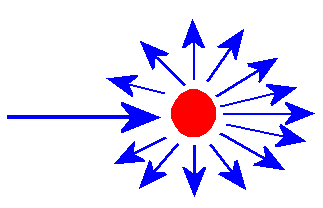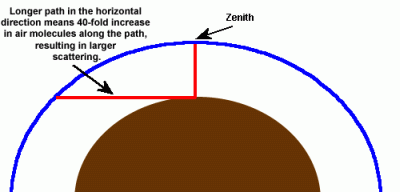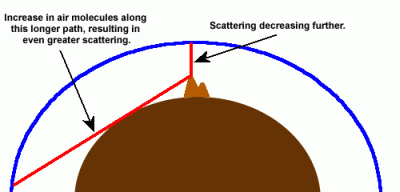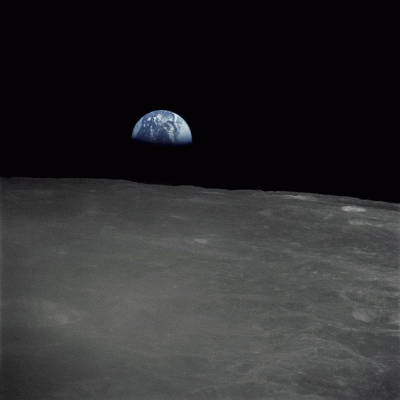Why is the sky blue?
Why is the sky blue?
LEE Boon-ying
Why is the sky blue?
In a clear fine day, the sky is blue. To explain this, we have to recap on the make-up of sunlight. Sunlight consists of light of every wavelength (loosely, colour).
As far back as the 19th Century, the English scientist Lord Rayleigh studied how light bounces off molecules (air molecules included) and pointed out that the amount of such scattering, i.e. change from the original direction of light, varies inversely with the wavelength (in technical terms, inversely proportional to the 4th power of the wavelength).

In other words, light with shorter wavelength (or 'bluer', wavelength of blue light is 450 nm) is more likely to be scattered than red light (wavelength 600 nm). This means that when we look in any part of the sky but not directly toward the sun, we see blue light because we are looking at scattered light.
Then why is the sky not violet? Violet light has a shorter wavelength than blue light.
Violet light is scattered more than blue light. However, the human eye is less sensitive to violet than to blue. As a result, we perceive a blue sky instead of a violet sky.
Why is the sky not exactly blue in the horizon?
In fact, the sky is brighter in the horizon than the sky above us.

The brightness of the sky depends on the amount of molecules along the line of sight. More air molecules mean a brighter sky.

For this reason, the sky is least bright with respect to the zenith and is very bright in the direction of the horizon.
From a mountain or a high-flying aeroplane, why is the sky darker than seen from the ground?

For the same reason, it can be argued that when viewed from a high point, the sky is darker with respect to the zenith and brighter in the direction of the horizon.
What is the colour of sky in space or on the moon?
Black, because there is no molecule and therefore no scattered light to brighten the sky.

Reference:
[1] D.K. Lynch and W. Livingston, "Colour and Light in Nature", Cambridge University Press, 2001.
[1] D.K. Lynch and W. Livingston, "Colour and Light in Nature", Cambridge University Press, 2001.